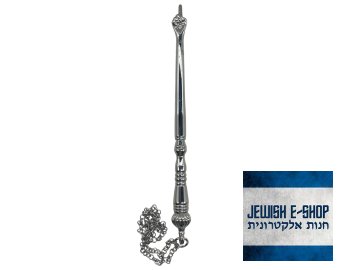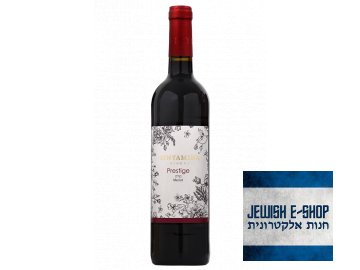Purim
Purim
This holiday commemorates the victory over Haman, minister of the Persian king Ahasuerus, who wanted to exterminate the Jewish people. The entire story is described in the Book of Esther. It was Esther who, through her wit, prevented the pogrom. The massacre was supposed to take place on the 13th day of the month of Adar. Haman determined the day by lot. This is also why Purim is sometimes called the Festival of Lots. In the Gregorian calendar, the celebrations usually fall at the turn of February and March.
How we celebrate: Exuberance comes to the fore. Carnivals are held, wine flows freely, theater is performed, and concerts are organized. However, there are also 4 important obligations associated with the holiday. It is necessary to read from the Book of Esther and whenever Haman's name is heard, to make as much noise as possible with noisemakers, stomping, or whistling. Gifts are also sent to at least two people. The same applies to donating food.
What we eat: Purim is preceded by fasting, so there is traditionally great interest in food. Fish, challah, fruit, vegetables, sweets, and wine. Lots of wine. Adults are supposed to drink more wine than usual. The imaginary goal is not to recognize the difference between the kind Mordecai and the insidious Haman. Haman himself also appears on the table in the form of triangles of crispy dough filled with either plum jam or poppy seeds - Haman's ears.
What we wish: "Purim sameach," meaning "happy Purim." However, some can't resist adding the word "kosher" to the wish. This is to ensure that people, even in their uninhibitedness, don't forget about appropriate behavior.
Product sorting
List of products

High quality fabric kippah with a decorated edge with embroidered colorful stars of David. The kippah is double-layered and has a clip in the lining for attachment.

Cap with print – with the Star of David and the witty slogan “MOSSAD. IT'S NEVER AN ACCIDENT”. The perfect accessory if you don’t lack a sense of humor and at the same time want...

We present you a clear diary for the Jewish year 5786, which is ideal for your pocket. This handy diary contains all the important holidays, necessary times and minhagim, so you...

The Torah pointer, or yad, is a practical tool used during the reading of Scripture by Jewish communities around the world. This particular yad will please with its elegant...

The Torah pointer, or yad, is a practical tool used during the reading of Scripture by Jewish communities around the world. This particular yad will please with its elegant...


Huge folding silver jad - Torah pointer. The pointer is composed of three parts that telescope into each other. It is richly decorated with wrought floral mitzvahs and the...

An antique, finely engraved silver saucer – tray for a Kiddush cup, with a diameter of 10.8 cm. The saucer is moderately deep, decorated with engraving, and bears an old Eastern...

Silver kiddush cup with engraved dedication "To J.A.W. From D.S.L.A. of Przeworsk". The cup is 11.2 cm high, hallmarked - Ag ESCO Sterling, and originates from the U.S.A....

An antique silver bowl for sugar, candies, nuts, or other small treats on the festive table (it can also serve as a charoset bowl for the Passover Seder). Diameter: 10.3 cm,...

Small silver kiddush cup from the Austro-Hungarian Empire period, decorated with engraving, 6 cm high, hallmarked – Ag 800/1000 Weight: 17.41 grams.

Small silver kiddush cup from the Austro-Hungarian Empire period, decorated with engraving, 6 cm high, hallmarked – Ag 800/1000 Weight: 17.41 grams.

Small silver kiddush cup from the Austro-Hungarian Empire period, decorated with engraving, 6 cm high, hallmarked – Ag 800/1000 Weight: 17.41 grams.

Small silver kiddush cup from the Austria-Hungary monarchy period, decorated with engraving, 6cm tall, hallmarked - Ag 800/1000 Weight 17.41 grams.

Small silver kiddush cup from the Austria-Hungary monarchy period, decorated with engraving, 6cm tall, hallmarked - Ag 800/1000 Weight 17.41 grams.

Small silver kiddush cup from the Austria-Hungary monarchy period, decorated with engraving, 6cm tall, hallmarked - Ag 800/1000 Weight 17.41 grams.

Small silver kiddush cup from the Austria-Hungary monarchy period, decorated with engraving, 6cm tall, hallmarked - Ag 800/1000 Weight 17.41 grams.

Small silver kiddush cup from the Austria-Hungary monarchy period, decorated with engraving, 6cm tall, hallmarked - Ag 800/1000 Weight 17.41 grams.

Small silver kiddush cup from the Austria-Hungary monarchy period, decorated with engraving, 6cm tall, hallmarked - Ag 800/1000 Weight 17.41 grams.

Small silver kiddush cup from the Austria-Hungary monarchy period, decorated with engraving, 6cm tall, hallmarked - Ag 800/1000 Weight 17.41 grams.
















